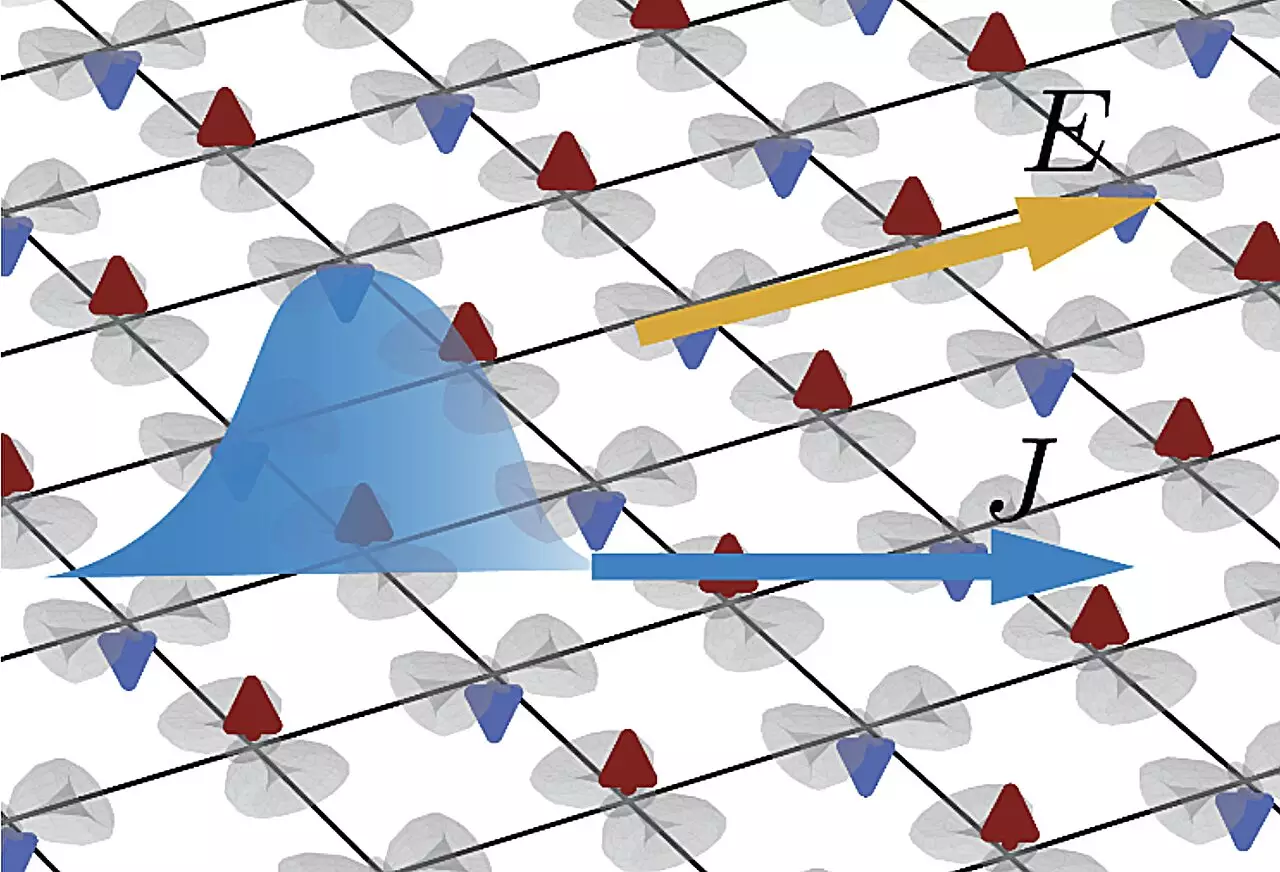In the ever-evolving landscape of materials science, altermagnets have emerged as a groundbreaking class of magnetic materials, capturing the attention of physicists and materials scientists alike. These novel materials present a distinctive magnetism that sets them apart from well-established categories such as ferromagnets and antiferromagnets. The hallmark characteristic of altermagnets lies in the behavior of their electrons, where spin and momentum dependencies interact in fascinating ways. As the landscape of spintronic and electronic devices transforms, altermagnets stand at the forefront of potential innovations, promising to reshape our understanding of topological materials and their unique electronic properties.
A recent research initiative conducted by experts at Stony Brook University sought to dissect the non-linear responses of planar altermagnets, revealing the fundamental influence of quantum geometry on these materials. Their findings, published in *Physical Review Letters*, delve into the intricacies of how quantum geometry governs the nonlinear responses that make altermagnets so intriguing. The research underscores the importance of factors such as Berry curvature and quantum metric in determining these responses, with implications that stretch beyond mere theoretical considerations.
Co-author Sayed Ali Akbar Ghorashi highlights the critical intersection of symmetry principles that define this study. In conventional PT-symmetric antiferromagnets—those abiding by both parity and time-reversal symmetries—previous experiments confirmed the effect of quantum geometry on their behavior. However, altermagnets defy this convention, lacking the combined PT symmetry, resulting in an elusive interaction between quantum geometry and nonlinear responses. Ghorashi’s team aimed to delineate this complex relationship, opening avenues for further exploration into the characteristics that define altermagnets.
The research team established a systematic approach to understanding the nonlinear response mechanisms inherent to altermagnets, ultimately leading to outcomes that exceeded their original hypotheses. Using semiclassical Boltzmann theory, the researchers meticulously computed contributions to the nonlinear response of these materials, dissecting the results order by order. The surprising nature of their findings revealed a strong link between the quantum geometric properties of altermagnets and their unique nonlinear responses.
Findings from the study revealed that due to inversion symmetry, altermagnets exhibit a vanishing second-order response. In stark contrast, they are the first class of magnetic materials where a third-order response manifests as the dominant nonlinear characteristic. This remarkable distinction positions altermagnets as pivotal in furthering our understanding of magnetic materials and their nonlinear transport properties.
Implications for Future Research
The results from this ground-breaking study bear significant implications for future investigations into altermagnets and their associated properties. Most notably, the research creates a foundation for a broader understanding of nonlinear transport, which had been limited in previous studies focused mainly on linear anomalous Hall conductivity. The novel transport characterization presented for altermagnets introduces an exciting realm of exploration that could inform the design of innovative spintronic devices.
Moving forward, Ghorashi emphasizes the importance of transcending the relaxation time approximation and addressing the complexities introduced by disorder in altermagnets. By acknowledging these additional factors, researchers can enrich the understanding of the quantum interactions at play, much like those observed in PT-symmetric antiferromagnets. This expanded approach promises to advance the body of knowledge regarding altermagnets and further illuminate their unique quantum geometric characteristics.
The exploration of altermagnets offers a tantalizing glimpse into the future of materials science and spintronics. With their unique properties and the potential to influence technological advances, these materials represent an exciting crossroads of study—one where physicists and material scientists can collaborate to unlock the mysteries of quantum geometry. As research continues to evolve and new discoveries surface, altermagnets may very well become central to the next generation of electronic devices, shaping the future of technology in ways we have yet to fully grasp. The journey of understanding altermagnets is just beginning, and the scientific community stands poised at the threshold of discovery, ready to delve deeper into their fascinating complexities.


Leave a Reply